DENSO Subcool Condensers: why they’re so efficient, top maintenance tips and what’s next for condenser development
In light of this trend, DENSO, in collaboration with leading car manufacturers, developed a subcool condenser with an intergrated receiver dryer, which was first introduced as an OEM component in 2002. The condenser was 15 percent more efficient than standard multiflow condensers, and after continuous development is now 45 percent more efficient.
Read on to learn more about why DENSO Subcool Condensers perform so well, plus discover our top maintenance tips and future trends.
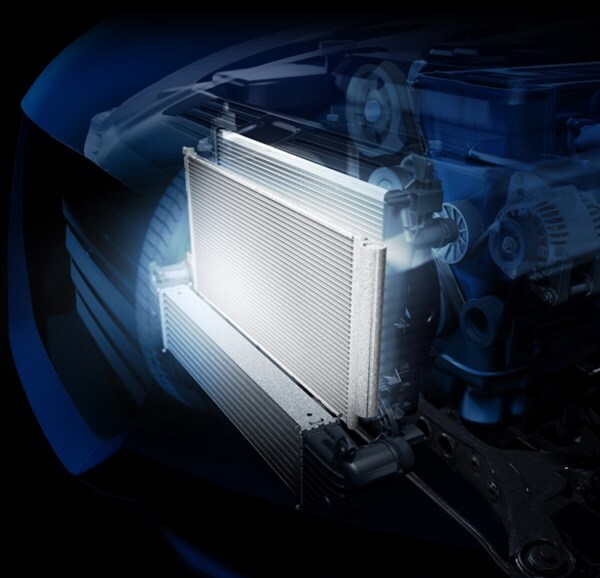
Subcool temperatures to lower fuel consumption
Subcool condensers are characterised by two key design features: the upper and middle part consists of a gas liquefaction area based on multiflow technology and the lower, so-called ‘super cool’ area. The subcool condenser has an additional heat exchanger in this lower part, to further cool down the liquefied refrigerant.
The performance level of the subcooling unit allows the refrigerant to cool down to a lower level than a standard condenser, optimising the subsequent evaporation of the refrigerant and improving cooling performance of the A/C system whilst lowering fuel consumption.
A compact design
The special fin design with louvers in the gaseous and liquefaction area, optimises the heat exchange and ensures complete condensation of the refrigerant. Due to the improved heat absorption/dissipation capacity, subcool condensers are now available in much smaller dimensions.
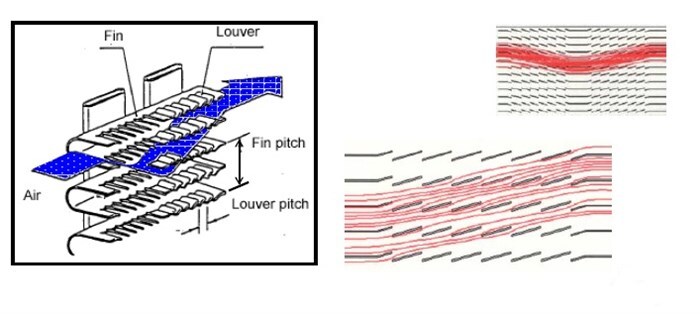 Less refrigerant required
Less refrigerant required
Since the refrigerant quantity in the A/C system depends on the volume and heat absorption/discharge capacity of the heat exchangers, A/C systems which use a subcool condenser require less refrigerant than those equipped with conventional multiflow condensers & separate receiver dryers.
Integrated receiver dryer, minimal risk of leaks
DENSO integrated the receiver dryer function into the subcool condenser design in the form of a modulator to one side of the condenser. This modulator has the same function as the receiver dryer, but since it is integrated, it reduces the number of connections and susceptibility to leaks in the A/C system.

![]()

A more efficient product
Based on these design and function improvements, DENSO Subcool Condensers are more efficient than regular multiflow condensers and now come as standard in almost every vehicle application.
Replacing the filter element
When the A/C system is opened, the filter element inside the modulator must be replaced – which is possible with most vehicle applications. The effort required depends on how well the modulator can be reached, based on the vehicle application. Nevertheless, some vehicle manufacturers use subcool condensers with completely sealed modulators and in this case, the entire subcool condenser must be replaced. Over time, corrosion may complicate the opening of the modulator connections and can cause leakage after changing the filter element – in this case the entire condenser must also be replaced.
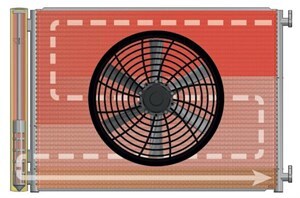
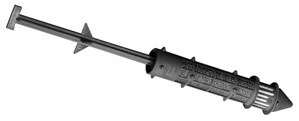
Essential maintenance for optimal cooling performance
For maximum cooling perfomance, the subcool condensers must be cleaned regularly (at least every two years) to remove the dirt that accumulates between the condenser and the radiator which can block the flow of air through the condenser, thereby reducing its cooling capacity. It can be cleaned using a special cleaner (Ph level between 3 to 7) and a low pressure water jet. When the contamination is extreme, the condenser needs to be removed to clean it thoroughly.
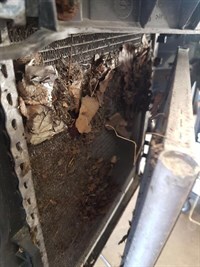

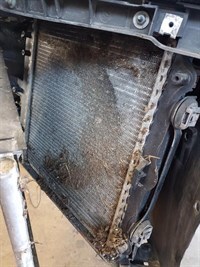
Wear and tear
Over the years, in addition to contaminants, a variety of factors can minimise the cooling performance of the A/C system. Cleaning the vehicle with a high pressure water jet (the condenser is located in the front area) also contributes to a reduced cooling capacity. If the cooling performance is poor, the pressure and compression temperature continuously remain at a higher level - a burden on the entire system, which also causes rubber hoses and pipes to wear down. The older the vehicle, the older the rubber hose connections will be and over time (6 to 7 years), they become porous and fine rubber particles dissolve. As the compressed hot gas from the compressor injects into the condenser at high pressure, such abrasions accumulate in the condenser and gradually start to clog the tiny cooling channels.

Replacing condensers
Since this condenser contamination is caused by abrasion, if solid particles are induced, the problem will not be solved by flushing, as it’s not possible to remove solid particles in this way. The flushing liquid flows towards the path of least resistance; flushing with refrigerant only flushes liquids (oils/UV dyes/sealants) out of the climate control system.
Solid particles clogging the condenser not only reduce its cooling capacity, they may come loose during system operation and be aspirated by the compressor, which can lead to further problems. For example, if the compressor is replaced, but the contaminants in the condenser are not corrected, it is very likely that compressor problems will reoccur.
Due to the increasingly intricate design and the dirt that gradually builds up, condensers are susceptible to wear and tear. When rubber abrasion is detected in the climate control system, in addition to other repair measures, the condenser must always be replaced. By using a sight glass, the condition of the refrigerant and compressor oil mix can be easily checked, which helps to determine the necessary repairs for the A/C system.

Compact condensers are the future
In 2012, DENSO developed a smaller and more efficient condenser, which helps increase fuel efficiency, whilst allowing carmakers greater design flexibility inside the engine compartment. Compared to conventional subcool condensers, DENSO's new Global Inner-fin Condenser (GIC) is 30 percent smaller.
To more efficiently transfer the refrigerant's heat flow, the size of the inner fins was reduced and the density maximized, which increased the heat transfer area by 20 percent. In addition, the capacity of the inner fin tube was increased by 25 percent, compared to conventional models, which enabled a higher amount of refrigerant to flow through the tube without increasing power consumption or size.
DENSO further improved the GIC's heat removal process by increasing the number of louvers in each fin by 30 percent per unit area. Despite this increase in louvers, the size of the fin was not increased.
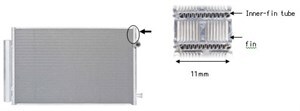
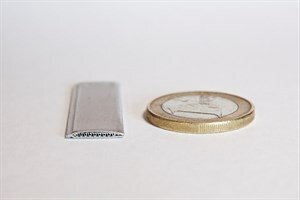
Comparison with €1 coin (GIC tube)
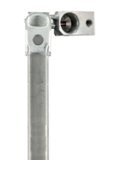
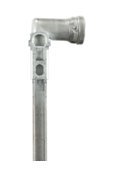
Conventional type (16mm) GIC type (11mm)
Why choose a DENSO Subcool Condenser?
DENSO Subcool Condensers are all OE quality, meaning they are manufactured according to strict vehicle specifications. They provide garages with the highest reliability for maintenance and repair of complex climate control and engine cooling systems. In addition, with 76 percent market coverage, including all major vehicle brands, they offer workshops real business opportunities.
- 100 percent OE quality
- Integrates seamlessly with the vehicle climate control system
- Durable high quality aluminium construction
- Optimised heat exchange via innovative fin design
- Requires less energy from the compressor and contributes to a more economical fuel consumption




















































